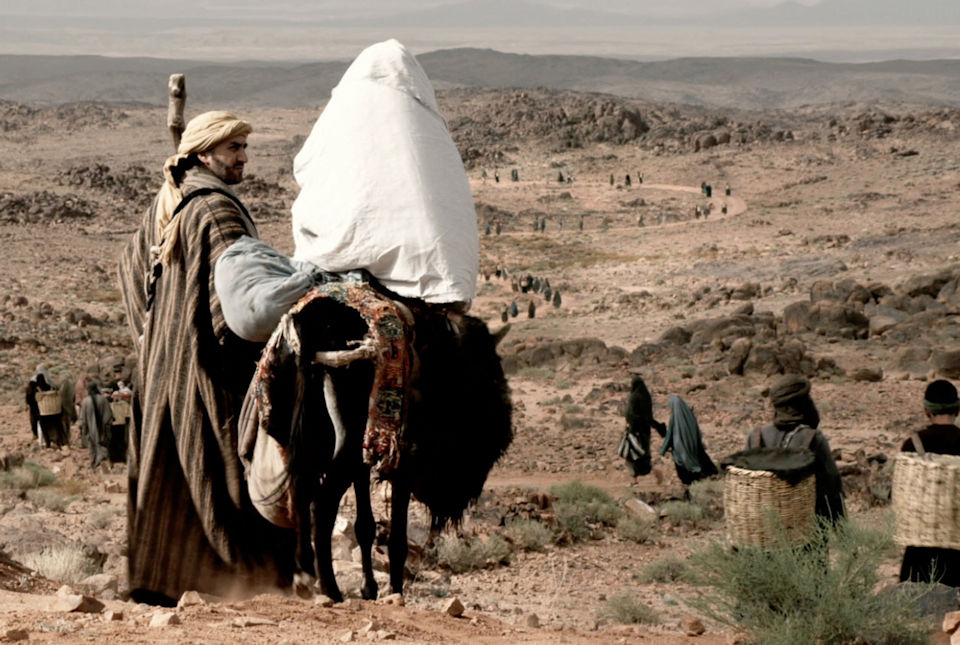Did you attend a Christmas pageant this season? How close do you think those bathrobe-clad actors came to capturing the royal birth in Bethlehem? Rev. Glenn Wagner takes us back to that first Christmas.
GLENN WAGNER
Michigan Conference Communications
Perspectives are different from the other side of the fence. We can deepen our understanding when we learn from others who offer us another point of view.
Consider the Christmas story. I naively used to think that everybody learned the story as I did.
I first learned about Jesus’ birth many years ago by playing a part in the annual Christmas Eve children’s pageant at church. Some of us were costumed as angels announcing the news of a royal birth to the shepherds in the fields near Bethlehem which was staged off to the side of the chancel. The lead angel declared, “Behold, I bring you tidings of great joy! For to you is born this day in the city of David, a Savior who is Christ the Lord!!” We loved singing along with our congregation and the cherub angel declaration was usually followed with verses from favorite carols like “O Little Town of Bethlehem,” and “Hark the Herald Angels Sing.”
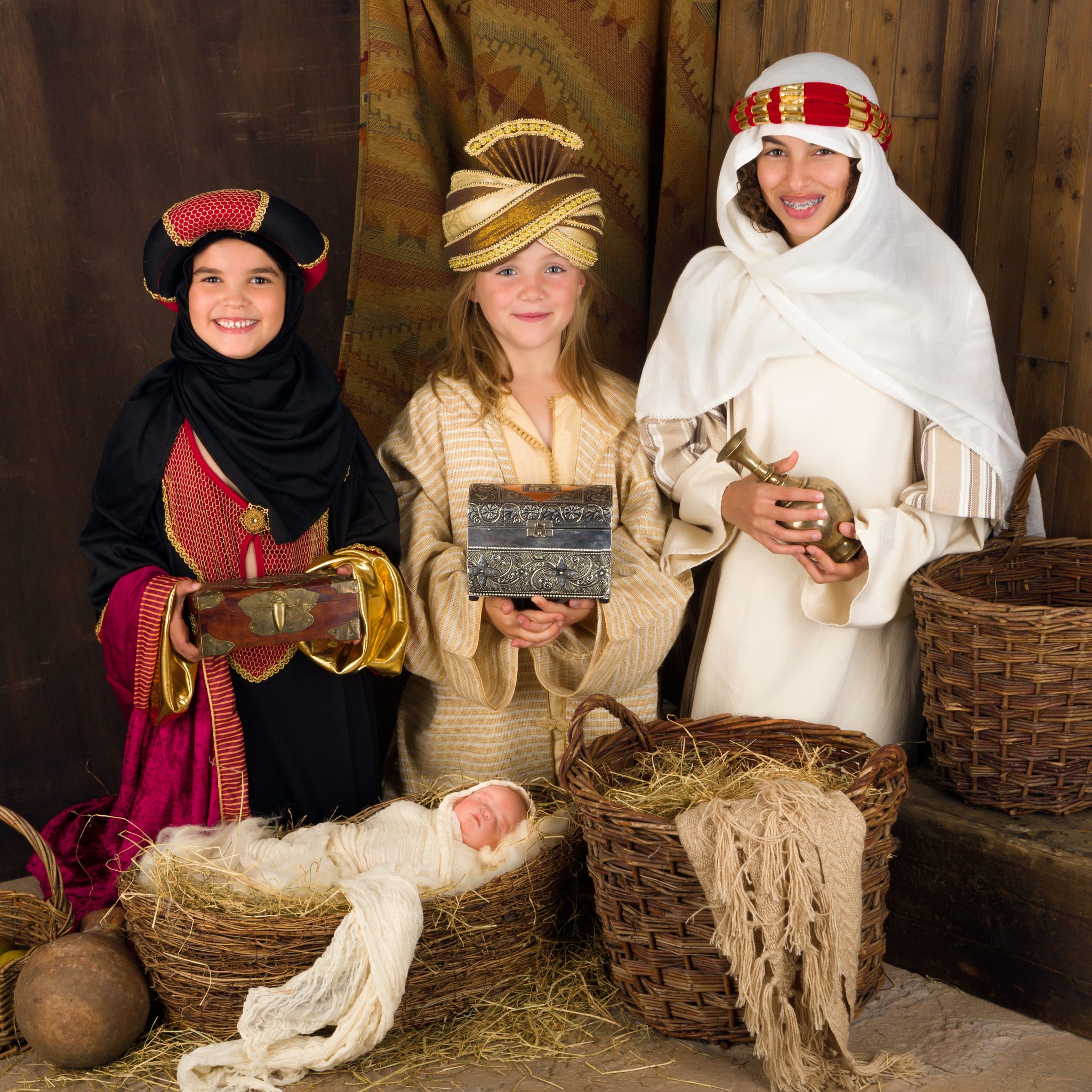
Three of us in our church Christmas pageant got to play the wise men remembered in Matthew’s gospel (Matthew 2:1-12), who came bearing gifts to honor the infant King. This part of the story was punctuated with the congregation singing the verses of “We Three Kings of Orient Are.”
I still remember my stint as an elementary school Christmas wise man garbed in a bathrobe, sandals and a cutout cardboard crown of gold. I was “the myrrh king” before I even knew that myrrh was a precious spice used for a variety of things including an ingredient in embalming oil and that some scholars have opined that this gift of myrrh might have been a foreshadowing of Jesus’ death. I have yet to meet any expectant mothers who register for gifts of myrrh for their baby showers!
The Christmas Eve re-enactments of my childhood always left out Herod’s jealous slaughter of all the baby boys of Bethlehem under the age of two (see Matthew 2:16). These ugly adult themes of political insecurity and violent jealousy were deemed by our elders to be inappropriate for a joyful Christmas Eve family worship with young children in the room.
Our Christmas pageant also had a child who played the cold-shouldered innkeeper. The innkeeper had one line, uttered on cue just after opening the door to a waiting Joseph and Mary. “I’m sorry, we’re full. There is no room in the inn.”
When Joseph and an expectant Mary showed up in the Christmas pageant to dutifully register for the required Roman census, we were reminded every year of the overcrowding caused by the census demand for rooms. There was no vacancy at the inn so Joseph and Mary were turned away in their hour of need and had to settle for a rustic infant delivery in the outdoor stable which was usually a manger/cradle set in front of the altar in the sanctuary so we all could gaze lovingly at the Holy Family. Then we sang, “Infant Holy, Infant Lowly, For a Bed a Cattle Stall.”
This is still the way I regularly hear the Christmas story retold in American churches each December. To recap, Jesus was a baby born in the humblest of circumstances. His birth was rejected by the powerful and announced by angels to the lowly. Shortly after Jesus’ birth, Jesus’ family became asylum seekers in a foreign land after fleeing to Egypt for their very lives from the hostile government of Herod the Great.
I was a Junior Year Abroad college student before I heard a credible alternate understanding of the Christmas story. This variant interpretation of our biblical narrative has helped to deepen my appreciation for Christmas.
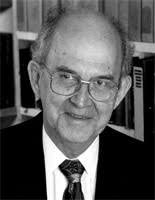
As a part of my study in Beirut, Lebanon I took a course at the Near East School of Theology which was taught by Dr. Kenneth Bailey.[1] After 40 years of ministry and teaching across the Middle East in Egypt, Lebanon, Palestine, Israel, and Cyprus, Dr. Bailey offered a different perspective on the story of Jesus’ birth as he came to understand it through the eyes of native inhabitants of the ancient villages where our biblical nativity stories originated. He also confirmed this different version of events with supporting archeological evidence and superb biblical scholarship.
When Dr. Bailey first preached Christmas sermons and retold the story of Jesus’ birth as he had come to understand it as an American missionary, he shared a version of events similar to what I had learned as a pageant participant. Dr. Bailey would get immediate and nearly unanimous push-back from his Middle Eastern parishioners. Their sense of family ties, hospitality, and long-standing community birthing practices were offended by his Western interpretation of the story.
Middle Eastern locals corrected Dr. Bailey’s viewpoint. They asserted that Joseph and Mary did not arrive in an overcrowded Bethlehem as persons who were unknown outsiders. Middle Eastern natives rightly refer to the extensive genealogy in Matthew 1:1-17 that Jesus’ family lineage, through Joseph, is royal and links him to one of Bethlehem’s favorite sons, the great King David. King David, living around 1,000 BC, was promised (see 2 Samuel 7:16 and Psalm 89:29) that the Davidic line of royal authority would be established forever.
Further, Luke 1:5 remembers that Mary’s relative Elizabeth is of “the daughters of Aaron.” Aaron, the brother of Moses, was the first High Priest of Israel and family descent from Aaron was a requirement for future High Priests. It is possible that Mary by her identified relation with Elizabeth was also a descendant of Aaron. That would make the engagement of Joseph and Mary a historic and highly anticipated union of the Kingly and the Priestly lines of Jewish families. Dr. Bailey points also to the claims of Hebrews 4:14, which praises Jesus as a High Priest in the heavens. Hebrews ties Jesus lineage not to descent from Aaron but to Melchizedek, an even earlier priest who is acknowledged in Genesis by Abraham (Genesis 14:18-20).
“The Christ,” the term we often use to refer to Jesus, means literally “the anointed one.” Middle Eastern believers understand affirming Jesus as Christ since the Bible makes this claim about his descent from royal and priestly ancestry.
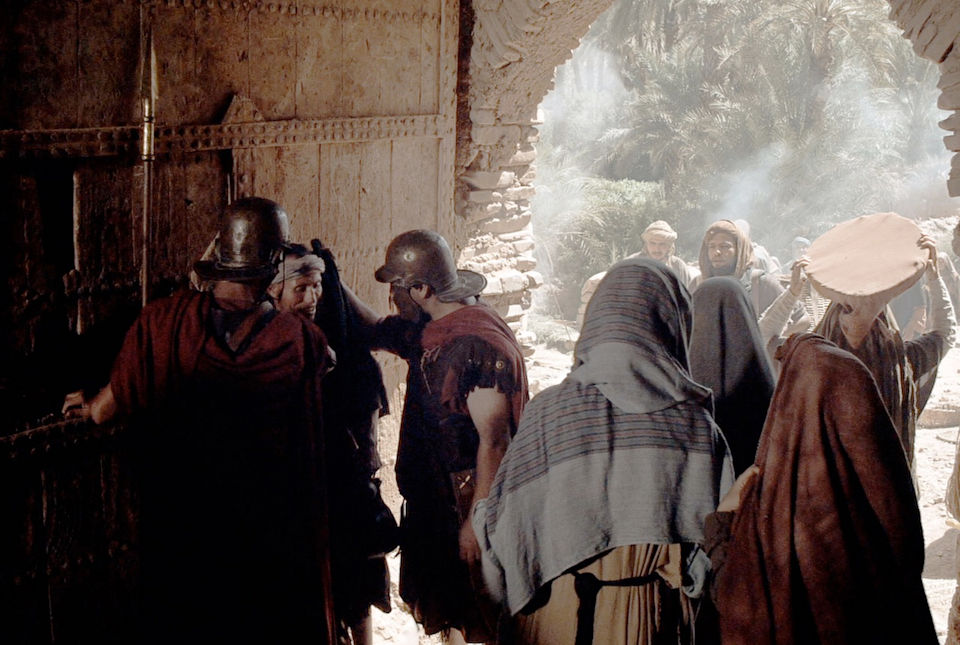
Middle Eastern locals also explained to Dr. Bailey that the births of new babies in their ancient villages had long been community-wide events of great celebration. Women crowded into the main room of the home where the delivery took place to give encouragement, help, and support to the laboring mom, while the men congregated outside to offer friendship and cheer to the expectant father. They further explained that “Whenever a new child is born in a village the grapevine broadcasts the news like a breaking headline and the rejoicing is shared by all.”
Dr. Bailey told our class that it is inconceivable to his Middle Eastern friends that a significant birth — such as the firstborn child of a descendant of a royal and priestly lineage on the fourteenth generation after the deportation to Babylon while Jerusalem suffered under the despotic whims of King Herod, an Edomite puppet of Rome — would be neglected by the residents of Bethlehem (David’s home town). They also believed that Joseph and his intended would not have been given anything less than a red-carpet welcome by the village of his extended and historic family roots.
Could we Americans ever imagine that a descendant of George Washington, the Father of our nation, engaged to be married to a pregnant descendant of Simon Peter, revered as the first Pope, would return to Mount Vernon on the 1,000th anniversary of the signing of the Declaration of Independence and be shunned during the significant delivery by the locals?
Westerners often imagine something like a Holiday Inn with a neon No Vacancy sign when we read this passage about Jesus’ birth and “no room at the inn.” In truth, the ancient Near East did not have “inns” as later came to be established in Europe.
Dr. Bailey added that the New Testament Greek word that scholars have translated in Luke 2:7 as “inn” is kataluma in English.
One possibility for understanding this kataluma is an Asian caravansary. Experts have noted that a caravansary is a large square building surrounding an open inner courtyard with a well in the center. Often a two-story building, with the lower one containing stalls for beasts and the upper consisting of small rooms for use of the human travelers. A caravansary was the primary commercial guest accommodation for travelers in the ancient near east.
Dr. Bailey observed that since the much smaller village of Bethlehem was only five miles from the larger capital city of Jerusalem, it is unlikely that such a caravansary existed in Bethlehem at the time of Jesus’ birth. W.F. Albright, a respected Biblical archaeologist estimated a population for the first-century village of Bethlehem of 300 persons. [2]
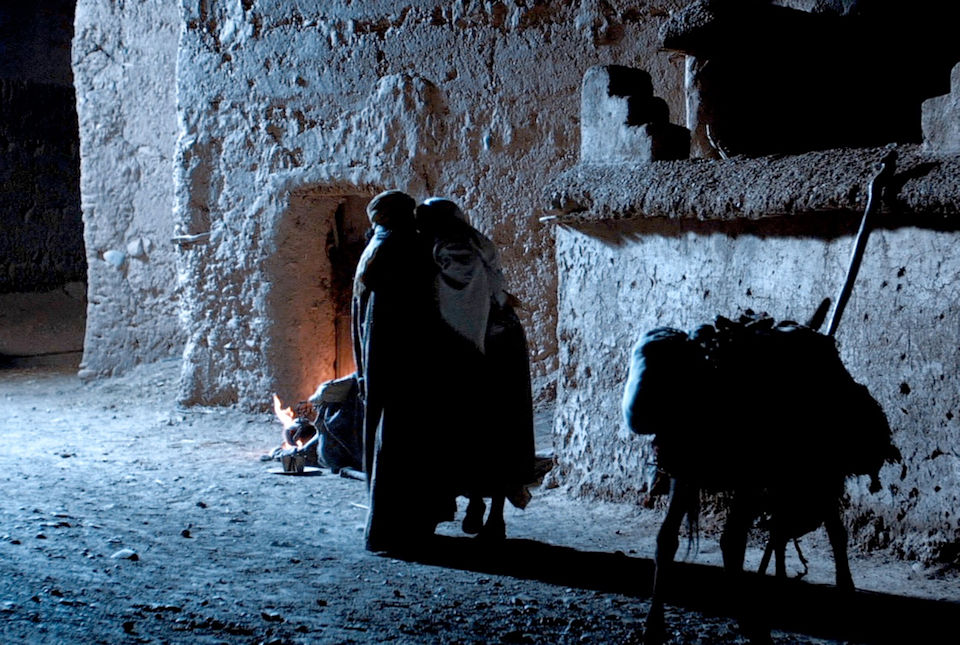
A second possibility for understanding kataluma is guest room. Dr. Bailey showed us findings from biblical archaeologists. Excavations of first-century homes in Bethlehem confirm a basic plan of a large open room with a split-level floor. Most daily family activities took place on the raised main floor; the lowered floor used in the winter to house cattle indoors for their shelter, thereby taking advantage of the extra animal body heat for family warmth. The main slightly-raised family floor would often also contain a manger (a feeding trough for the live-stock near the edge between the upper and lower main floors. Wealthy families in first-century Bethlehem also had as a part of their home a second story with an upper room that was frequently used for sleeping and or the accommodation of guests. The guest room, provides an alternate explanation of Jesus’ birth in the kataluma of Luke 2:7, with a Near Eastern angle in keeping with native customs.
Locals also shared with Dr. Bailey that they believe when Joseph and Mary arrived in Bethlehem, they would have been welcomed by their extended family with great joy despite any religious qualms about the circumstances of Mary’s pregnancy.
Marriages in the traditional Middle Eastern villages were all pre-arranged. Locals assured Dr. Bailey that this would most certainly have been the case with such an auspicious pairing. The biblical story assumes that negotiation and public agreement to seal the engagement for the wedding had already taken place in Nazareth where both Mary and Joseph were residing.
Middle Eastern natives also understand the scandal of Mary’s unexpected pre-wedding pregnancy by someone other than her betrothed Joseph as reported in Matthew 1:18-25 and implied in Luke 1:26-37.
We never covered this pregnancy scandal material in our church children’s Christmas pageants. But Kenneth Bailey’s Middle Eastern friends all knew that such a scandal could result in the fracturing of Joseph and Mary’s engagement and the likely public stoning to death of the disgraced Mary as well as her unknown “lover” if he could be found. It made perfect sense that Mary would be moved for her own safety away from Nazareth during her pregnancy to the hill country of Judea and the supportive pre-natal companionship of her also pregnant kinswoman, Elizabeth, as described in Luke 1:39-46. The Bible remembers that Mary made this journey from Nazareth to Elizabeth’s with haste. Dr. Bailey’s Middle Eastern audience explained that it seemed very likely to them that having Mary stay far away from Nazareth with Elizabeth and her muted priest, husband Zechariah (see Luke 1:5-25), during her pregnancy would provide Mary necessary protection from the immediate harsh judgment of her less tolerant neighbors in Nazareth.
Further, Joseph’s decision to not end the engagement with a divorce and public shaming but to wed Mary regardless (see Matthew 1:18-25) offered Mary further protection from harm. Middle Eastern locals have no doubt that the wishes of a descendant of David would have been honored. The anticipated arrival of Mary and Joseph’s child would have been national news welcomed by all who cherished the memories of the Davidic glory years of Israel’s past and who were weary of the political corruption and difficult lineage of the current violent and self-serving dictator. Locals believed it likely that many of the region’s oppressed citizens hoped that this baby would help change their future.
Dr. Bailey came to believe that the translation of the Greek word kataluma as “inn” in Luke 2:7 was done by Western Europeans at a much later point in history when commercial inns in Europe were more commonplace. Dr. Bailey believes that it makes more sense from a Middle Eastern perspective and in the context of Bethlehem that the verse should have been translated from the original Greek: they wrapped him in swaddling cloths and laid him in the manger because there wasn’t room for the supportive community and the delivery in the guest room. The manger which was a common feature in first-century Bethlehem homes on the main floor would have been a logical place for placing the newborn baby for sleep.
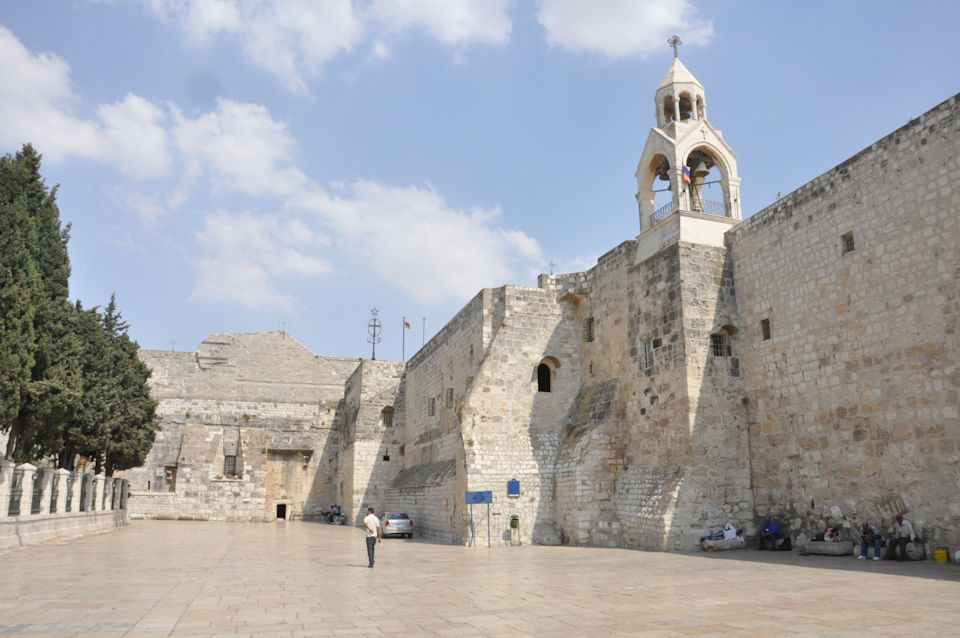
In the spring of 1974 and three more times since, I have been blessed to visit the Church of the Nativity in Bethlehem. The church was originally commissioned by the Holy Roman Emperor Constantine the Great a short time after his mother Helena‘s visit to Jerusalem and Bethlehem in 325–326 AD. It stands on the site that was traditionally considered to be the birthplace of Jesus. It remains one of the most significant churches in Christendom.
A silver star in the basement of the church marks the traditional location of Jesus’ birth.
Hearing the Christmas narrative about the birth of Jesus from a Middle Eastern perspective has changed how I experience Christmas.
Recently in church, I heard yet another new angle on the story based on biblical scholarship that presumes that Matthew’s account of Jesus’ birth was written after the fall of Jerusalem in 70 AD. Roman troops sacked the city in response to a Jewish revolt against continuing Roman rule. Troops destroyed the temple that had been a focal point of Jewish worship since the days when Abraham took his son Isaac to this mountain top to sacrifice him and where Isaac was spared when God provided a ram for the sacrifice instead. The year 70 AD also began the forced exile of Jews (Diaspora) from their homeland. Matthew’s original intended audience for his Gospel was likely a community of Jewish believers who saw the birth of Jesus as a sign that God was still at work in a powerful way in spite of their bleak circumstance of dislocation from the life they knew before.
I still attend Christmas pageants where little boys in bathrobes and cut out crowns of cardboard painted gold honor the birth of the baby Jesus while filling the roles of the magi of old.
My English Bible still tells me that there was no room at the Inn. The innkeeper will likely send Joseph and Mary away again at this year’s reenactment. Family Christmas pageants at church still mostly skip entirely the grown-up issues about the scandal of a pregnancy out of wedlock and the palace intrigue of an insecure autocrat and the later upheaval of the Diaspora. With age and insight from those with different perspectives, I have a new appreciation for how the birth of this special child brought with it promise, and hope, and inexpressible joy to a community that welcomed the child and his parents, and also suffered deeply for their natural expression of hospitality.
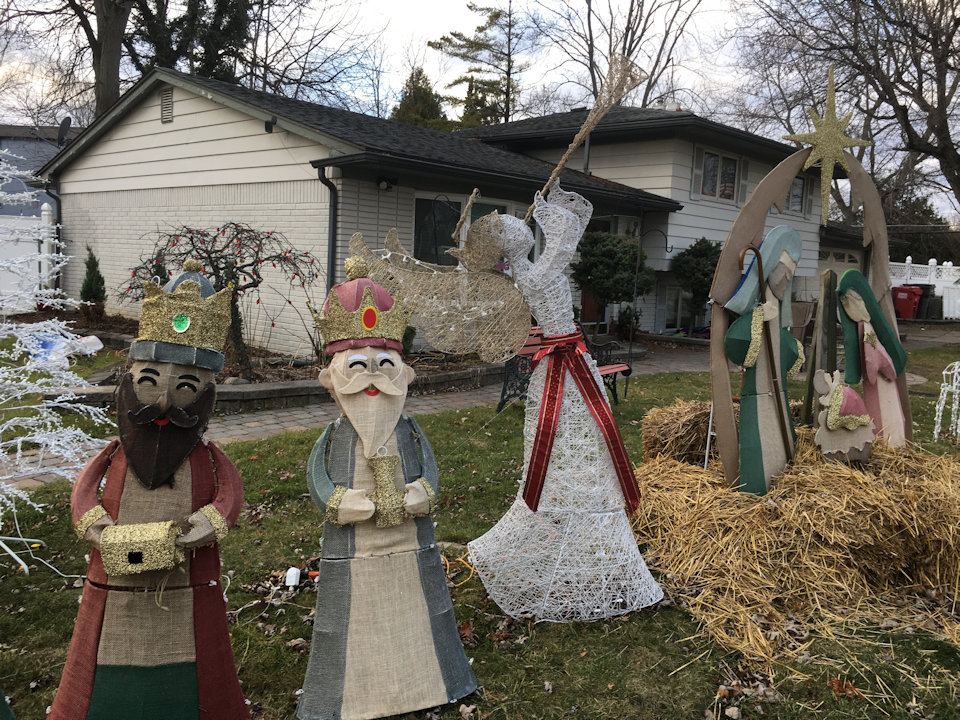
Seeing things from a new angle has the capacity to make us better people.
In her book, Holy Envy, Finding God in the Faith of Others, Barbara Brown Taylor relates learnings from her years of teaching a World Religions 101 Course at Piedmont College in Georgia. In purposefully studying, meeting, and listening to other human beings who experience life and God from angles very different from her own, Barbara honestly relates how others have altered her own witness for her faith.
One of her most powerful insights gleaned from experiencing life from different points of view is this, “When my religion comes between me and my neighbor, I choose my neighbor.”[3]
I am grateful that from heaven’s perspective, God determined that all of humanity can benefit from the birth of Jesus. However we hear this most important story, I pray that we will respond with grace to this Christmas gift of God’s great love for us all with more intentional love for each other.
“Joy to the World, the Lord has come. Let earth receive her King. Let every heart prepare Him room.”
1) Persons interested in learning more about Dr. Kenneth Bailey’s insights will benefit from checking out his books, including Jesus through Middle Eastern Eyes: Cultural Studies in the Gospels, Intervarsity Press 2008
2) The population of Bethlehem at the time of Jesus
3) Barbara Brown Taylor, Holy Envy: Finding God in the Faith of Others, Harper One, 2019, p. 208
Last Updated on September 20, 2022

